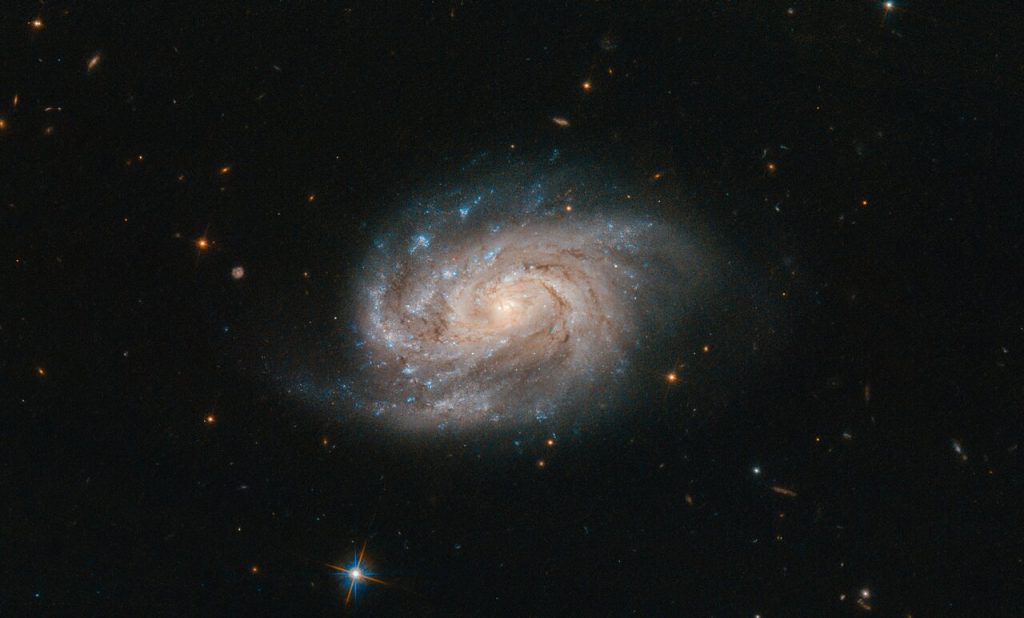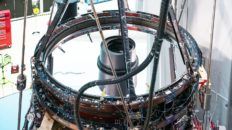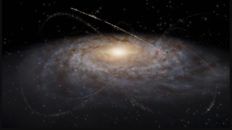
A imagem acima, feita pelo Telescópio Espacial Hubble da NASA/ESA, mostra a galáxia conhecida como NGC 1803. Essa galáxia está situada a cerca de 200 milhões de anos-luz de distância da Terra, na constelação de Pictor.
A NGC 1803 foi descoberta em 1834 pelo astrônomo John herschel. Herschel é um grande nome na astronomia, John, seu pai William e a sua tia Caroline, todos eles fizeram grandes descobertas e trouxeram grandes contribuições par a astronomia, e o seu legado dura até hoje. William, de maneira sistemática catalogou muitos objetos do céu noturno, deu nome a satélites naturais do Sistema Solar, descobriu a radiação infravermelha, entre outras coisas. Caroline, descobriu uma série de cometas e nebulosas. John fez um belo catálogo de objetos do céu noturno e retrabalhou e expandiu, criando o General Catalogue of Nebulae and Clusters of Stars. Esse foi a base para a criação do catálogo que é usado até hoje pelos astrônomos, o New General Catalogue of Nebulae and Clusters of Stars, de Dreyer, ou simplesmente, o New General Catalogue, também conhecido pelas letras NGC.
Com isso então um grande número de galáxias foi identificadas, todas que têm NGC na frente dos números, incluindo a NGC 1803. Essa galáxia na verdade é um par de galáxias. Ela foi descrita por Dreyer como sendo, apagada, pequena e arredondada, e localizada perto de uma estrela muito brilhante a sudeste. Essa estrela que ele mencionou, na verdade é outra galáxia, uma galáxia do tipo lenticular e conhecida como PGC 16720, que não aparece na imagem.
Crédito:
ESA/Hubble & NASA, A. Bellini et al.
Fonte:
https://www.spacetelescope.org/images/potw2002a/





